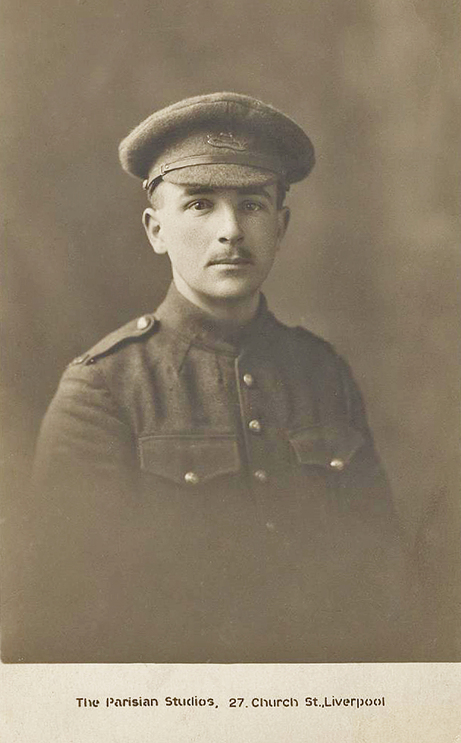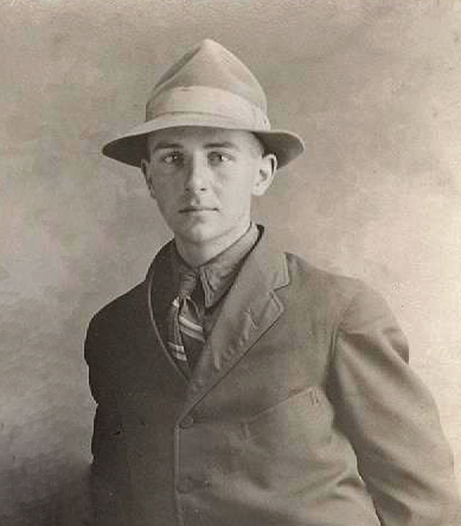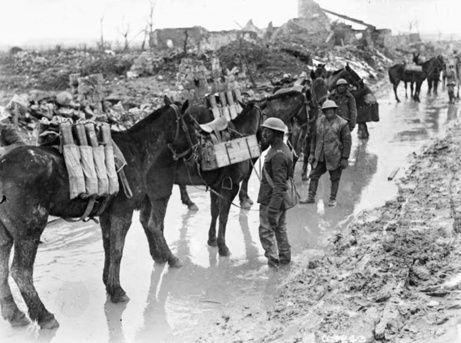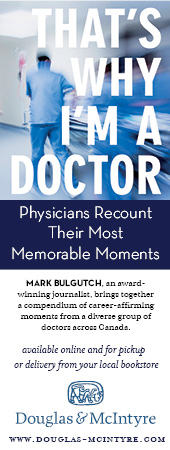B.C. Lit marks double anniversary
Of the 611,000 Canadians who fought for King and Country in World War One, 55,570 were from British Columbia. That was the highest per capita enlistment rate in Canada. That partially explains why you can look for forthcoming reviews of at least seven new books about World War One in B.C. BookWorld this fall.
August 13th, 2014

When all was quiet on the western front, words outweighed bombs.
It’s not just the 100th anniversary of World War I this year; Remembrance Day will mark the 75th anniversary of the outbreak of World War II.
The trend for high enlistment from B.C. was repeated in World War Two, when 90,976 men from B.C. joined up — again, the highest per capita enlistment in Canada. Incredibly, more than half of all B.C. men joined up, and that’s not even counting the women who were in uniform for the first time. http://www.canadaatwar.ca/content-7/world-war-ii/facts-and-information.
Here is a partial list of forthcoming war-related books from British Columbia.
— Mark Forsythe and Greg Dickson’s From the West Coast to the Western Front: British Columbians and the Great War (Harbour $26.95).
— Sherrill Grace’s Landscapes of War and Memory: The Two World Wars in Canadian Literature and the Arts, 1977-2007 (University of Alberta Press $49.95)
— Doris Gregory’s How I Won the War for the Allies: One Sassy Canadian Soldier’s Story (Ronsdale $21.95).
— Barry Gough’s From Classroom to Battlefield: Victoria High School and the First World War (Heritage $19.95)
— John Wilson’s And In the Morning: Fields of Conflict—The Somme(Heritage $12.95)
— Mark Zuehlke’s Forgotten Victory: First Canadian Army and the Winter Campaigns of 1944-1945 (Douglas & McIntyre $37.95)
— Elinor Florence’s Bird’s Eye View (Dundurn $24.99).
In October, journalist Elinor Florence of Invermere will release her first novel set during the Second World War. Bird’s Eye View (Dundurn $24.99) tells the story of an idealistic prairie farm girl who joins the air force and becomes an aerial photographic interpreter. We’ve all heard of spies and code-breakers, but photo interpretation is a litle-known branch of Intelligence which involves studying aerial photographs through a device called a stereoscope, essentially spying on the enemy from the sky, searching for bomb targets and detecting troop movements on the ground.
The protagonist Rose Jolliffe, along with hundreds of other interpreters, works from a converted mansion in England. Located about an hour north of London, not far from Bletchley Park, the mansion was requisitioned by the Royal Air Force and renamed RAF Medmenham. Nowadays it’s a luxury hotel called Danesfield House.
Lonely and homesick, Rose keeps in touch with the home front back in Canada through frequent letters from her mother. But an unhappy love affair and her increasing disillusionment with war causes her world to fall apart. Her path to maturity is a painful one, paralleled by the agonizing progress of the war and Canada’s emergence from Britain’s shadow. This debut novel is filled with drama, romance and plenty of colourful Canadian wartime history.
9781459721432
Elinor Florence maintains a remarkable, extensive blog called Wartime Wednesdays in which she shares her research into Canada’s wartime history, concentrating on the two world wars. www.elinorflorence.com/blog
Here is a sample from Elinor Florence’s Wartime Wednesdays site, a profile of her godfather:

—
Too Short to Get Shot
July 30, 2014
My godfather Colin Greener stood five foot three in his boots, but he had the heart of a lion. In World War One he fought in the trenches, was wounded twice, and decorated for bravery. He always joked that if he had been taller he wouldn’t have survived.
When Britain entered World War One on August 4, 1914 – one hundred years ago this week — Canada was right there beside her, shoulder to shoulder with the Mother Country.
And amidst all the fanfare that marks this momentous event, my thoughts turn towards my brave yet humble godfather.
Colin Campbell Greener was not only my godfather, but also my mother’s. He earned this double distinction through his close friendship with my grandfather Charles Light.
Both men came from Battleford, Saskatchewan. They had the great common bond of surviving the horrors of trench warfare, not to mention their mutual lifelong passion for hunting and fishing. (To read about my grandfather’s service in Lord Strathcona’s Horse, click here: Brotherly Love.)
Colin was born on June 14, 1891 at Highfield, Lancashire, the son of a mining engineer, in the handsome home pictured below. But the family fell on hard times when his father was killed in a mining accident.
One of nine children, Colin decided to strike out on his own, and emigrated to Canada, ALONE, at the age of sixteen. Gosh, they grew up fast in those days!
Colin arrived in Battleford in May 1908 and several days later, he started working in the Bank of Hamilton. He supported himself until he turned eighteen and was old enough to claim his homestead. (He sat up all night in front of the land titles office to be first in line for his chosen 160 acres.)
Here he is, in a studio photograph taken to send home to his mother. Still a teenager, he’s already a mature adult making his own way in the world. How she must have worried about him.
Colin knew little about farming, but he learned fast. That spring he planted his first crop of No. 1 Red Fife wheat and was proud when it averaged 20 bushels to the acre, for which he received 90 cents per bushel.
For the next few years, he supplemented his income by working on the railway, hiring himself out as a thresher hand, and delivering bread.
When World War One was declared, Colin was one of the first in line. He joined the First Canadian Expeditionary Force in August 1914 at the age of twenty-three, travelled to Quebec on a troop train, sailed to England on the S.S. Lapland, and then trained on Salisbury Plains until Christmas.
My grandfather was there, too. Together they looked like Mutt and Jeff, because Charlie was a strapping lad of twenty, over six feet tall and an amateur heavyweight boxer. But the two had their photo taken together for the folks back home. (Notice how the photographer has positioned Charlie so that he isn’t towering over Colin.)
Colin was then sent to Canterbury, where two examining teams, through tests and interviews, chose 140 men each for Lord Strathcona’s Horse and the Royal Canadian Dragoons. Charlie went to the Strathconas, and Colin to the Dragoons.
The Royal Canadian Dragoons regiment began in 1883 and still exists as an armoured regiment today. Adopted during their service in the Boer War in South Africa, the badge which can be seen on Colin’s cap in the main photograph, shows a springbok bounding on a green veldt. Their motto is “Bold and Swift.” Colin proved to be both.
During his training in England, Colin was among the first Canadians to be issued with the new Lee Enfield rifle, the only one short enough to be fired while on horseback.
He landed in France on May 4, 1915 and joined the long, bloody struggle optimistically called the War to End All Wars.
An interview with Colin about his wartime experiences was taped around 1970, and then transcribed by my mother on her typewriter. The word-for-word excerpt has so much authenticity that it’s almost frightening.
Here’s a description of one of his many battles, in his own words:
“In March 1917, the Huns evacuated part of the Somme line, and our outfit got the nod to move in. We had three days forced march. We landed at Peronne. The area was unknown to us, so we sent out scouting parties to determine our area. It was very cold, with snow and rain.
“I was a Corporal in charge of a Hotchkiss gun, seven hundred rounds per minute. That night while we were on patrol, we were ordered to get ready and mount in company with three other Hotchkiss gun sections, and in pitch dark, we travelled about seven miles northeast.
“By early dawn we were concealed in a sunken road near the village which was to be taken. The whole group was under the command of Major Newcomen. We had to go up quite a hill. We were mounted at the time. We tried it mounted first of all, but there was too much machine gun fire and there were shells, too.
“Most of the German artillery were away to hell and gone, but they had a lot of light batteries there. We called them pipqueaks. They were the smallest shells that the Germans used. I think they would be about fifteen pounders. Good enough to kill you.
“We had to get out of there. We sent our horses back and got them to a sunken road. Those roads were made by traffic over the centuries. There were a lot of them in France. They were worn down about ten feet. Anyway, we got our horses down there, and left men with eight horses apiece so that we would have them when we needed them again.
“We started to take the hill on foot. It started to get a little hot, so we flopped. That was when I lost my two men. I knew there was a sniper. The sun would come out for a minute and then it would go under again. It was wet because it had been snowing, then raining. That made our helmets shine, you see.
“I took my hat off and used it as a scoop to get a little cover. I was shoving the dirt out in front. And you know, that damn sniper, he put a hole in my tin helmet, pretty near the button! The bullet went right between my arms.
“We had our overcoats on, what we called British warms, they were short overcoats, and he cut the damn pocket, he slit the pocket right across, and I lost my pipe and tobacco!
“That bullet hit my number two man, and he let a yowl out of him. I was busy watching where this shot came from, and there was a cemetery just outside this little village. I saw this fellow and he was speeding up, getting out of there, he was near a big gravestone.
“I had my gun lined up. This was a very fast shooting gun, for those days anyway. Seven hundred rounds a minute. Of course, you couldn’t shoot it that fast, because you couldn’t load that many shells in it. Our shells were in a strip of thirty.
“Anyway, I saw this fellow and I thought: ‘I’ll teach you to shoot holes in my tin hat!’ and I let him have it.
“I don’t know whether I got him or not. I couldn’t go and look because we were under fire. But those snipers were pretty slick, and of course they had good rifles and good telescopic sights, too. That was how he was able to get my lid. I guess he thought my head was in it!
“My man, he was hit in the leg. I bandaged him up and we got him out. We had to lie there for a couple of hours. A fellow and me, we were in the hole and we saw this horse coming by, all alone, at a gallop. This fellow jumped out of the hole and ran and grabbed the lead line on this pack horse, and we took the gun off him and the ammunition, the satchel we called it, that little grip. Each one of them held three hundred rounds. We did this quickly because we were under fire at the same time.
“We took the bridle off the horse and gave him a swat on the rear and away he went. We never saw him again. The fellow who had charge of that pack horse, he would ride his own horse and lead the other horse along. He must have been either killed or wounded.
“Anyway, I knew that pack horse well. He was a perfect pack horse. The trouble with pack horses was that they would stay behind, and they wouldn’t jump with you. This fellow, he would jump with you.”
“It was cold and wet there, and we had nothing to eat. In the meantime, the infantry had come up and taken over the village. We had chased them out of the village, and then the infantry came up and consolidated it. Finally, we were told to get the hell out.
“When we got back to our regiment, the brigade was just pulling out. They were making a big assault that night. I had two casualties and there were only four others and myself left in my section.
“And we met our Colonel, Van Straubenzee, a man most heartily detested. And of course, he stopped me.
“The whole brigade was lined up, ready to pull out, you see. And he said: ‘WHERE HAVE YOU BEEN?’ just like that. I said: ‘We have been taking a village, sir.’
“We had left at one in the morning. We hadn’t had anything to eat, and we were ravenously hungry. Anyway, he said: ‘Rejoin your troops immediately!’ Well, we rejoined our troop and they were just pulling out.
“The troop sergeant had our rations, two extra rations because there were two less of us. That was one of the days we got some beef steak. It wasn’t T-bone steak or anything like that. It was raw beef, and of course we couldn’t cook it, but we got hard tack and some bread and some jam and cheese.
“That was twenty-four hours of rations, you see. That was dished out every night, and it had to last you until the next night. We ate, of course – the only time in my life I ever ate raw meat, and it tasted damn good, too!
“This Straubenzee cared more for spit and polish that he did for his men. He was later killed in action just before the end of the war. Many cheered and few were sorry at the event.”
(I looked for more information on this commander and found this: Lieutenant-Colonel Charles Turner Van Straubenzee was born in Kingston, Ontario, a veteran of the Boer War, and commander of the Royal Canadian Dragoons. He was mentioned in dispatches several times for gallant and distinguished conduct. He was killed one month before the war ended and is buried in France. I even found this portrait of him.)
To recap Colin’s time overseas, life was an ongoing series of battles, culminating in the Battle of Amiens in August 1918, which was considered the decisive battle of the war.
By that time, he was a Sergeant in command of two hundred men. He survived that battle, which he called “the death valley of Germany,” although his horse was shot out from under him.
He was later wounded in another battle when a piece of an exploding shell went through his ear. He recovered in hospital for a month, and soon after he rejoined his regiment he went down with influenza, the disease that killed 100 million people worldwide in 1918.
Colin may have been small in stature, but he was tough. He recovered, and was back in France again when the Armistice was signed at the eleventh hour of the eleventh day of the eleventh month, 1918.
He rounded up German prisoners, and then was allowed to go into Germany to see his brother Hugh, who was a major in the British Army. His younger brother Arthur, in the same unit as Hugh, had been killed.
By 1919, he was back in Saskatchewan with a Military Medal like this one, awarded for bravery in the field.
Through the Soldier Settlement Act, set up to assist returning servicemen after the first war, Colin purchased a better farm near Prongua, about 20 kilometres west of Battleford. And there he lived for the rest of his life.
Colin never married, and always said he had missed his chance because of the war. He had been a churchgoer, but during the war he lost his faith and rarely attended church again except for a special occasion.
However, he remained intensely patriotic. My mother recalls that once when the orchestra was playing God Save the King after a local dance, Colin charged over to a burly man who hadn’t stood at attention and demanded that he show the proper respect.
He was also an avid sportsman and passionate lover of the outdoors. Here he is skating on one of Saskatchewan’s many sloughs.
Colin spent many happy hours walking in the countryside, identifying plants and birds. He was also an avid hunter and fisherman, although nothing annoyed him more than people who broke the game laws.
Colin had many friends and neighbours around Battleford. He was a kind and loving godfather, and especially close to my mother June, who acted as a daughter when Colin reached his old age.
Here’s a photo of the three of us in about 1954, with Colin’s immaculately-maintained and polished truck. (My tall mother has diplomatically seated herself on the bumper.)
Colin was a life member of the Royal Canadian Legion, an original member of the Saskatchewan Wheat Pool, and Past Master of the local Masonic Lodge. He served on the executive of the Saskatchewan Motor Club, the Saskatchewan Natural History Society, and the local School Board.
Colin remained in his tidy little farmhouse near Prongua for many years. He had electricity installed, but never plumbing or an oil furnace. He was still baking his own bread and chopping his own firewood at the age of 82, when he was forced to move into a nursing home.
He died in September 1979, at the age of 88.





Leave a Reply